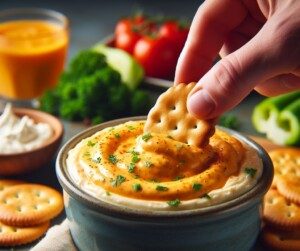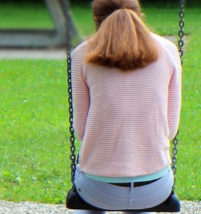Are you a dipper when it comes to chips? Have you ever wondered if dipping your chips makes you eat more chips, or less, when compared to having no dip at all?
Snacks contribute to about one-fourth of daily calories for most people.
With nearly one in three adults in the U.S. overweight and more than two in five with obesity, as reported by the National Institutes of Health, researchers at the Penn State Sensory Evaluation Center are examining ways to promote smarter snacking habits among Americans.
A study from the Center, part of the College of Agricultural Sciences, explored changes in eating behavior when consumers are provided a dip along with a salty snack.
The findings, now available online and slated for publication in the November 2024 issue of Food Quality and Preference, reveal that the presence of dip significantly increases overall caloric intake.
Specifically, the combination of chips and dip resulted in a 77% increase in caloric consumption and a faster eating rate compared to eating chips alone.
Interestingly, the study, led by John Hayes, professor of food science and director of the Penn State Sensory Evaluation Center at the time of the study, found no difference in the amount of chips consumed — whether or not dip was available.
In the paper, Hayes explains that participants actually ate the same amount of chips when dip was available – while also eating the dip.
In a nutshell: People can eat more without even realizing it.
This finding challenges the intuitive belief that adding something extra to a snack, such as dip, would lead people to eat less of the main item.
The paper points out that with chips and dip, this is not the case.
People ate the same amount of chips – whether or not dip was available; whether or not they dipped the chips.
How the Study Was Done
The study assessed 46 adult participants over two visits to the Sensory Evaluation Center.
Each participant was served 70 grams of ranch-flavored chips (about 2.5 servings) with or without approximately a third of a cup of ranch dip.
They were allowed to eat as much as they wanted, and their intake was meticulously measured.
All eating sessions were video recorded and analyzed for number of bites and active eating time, which allowed researchers to calculate measures of “eating microstructure,” such as eating rate and bite size.
Research assistant Madeline Harper, who led the study, suggested that the increased intake of chips and dip was facilitated by a larger bite size due to the presence of the dip.
On average, participants consumed 345 calories of chips and dip per eating session compared to 195 calories of chips alone.
Harper highlighted the novelty of the study, noting that little research has been conducted on how external sources of oral lubrication, like dips, affect the oral processing of salty snacks.
“Clearly, it has an influence on food intake, especially while snacking,” says Harper in the report.
“However, the greater intake resulting from dip inclusion may have been facilitated by larger total snack bite size, as opposed to a faster chip eating rate.”
Hayes emphasizes the importance of understanding eating behavior around snacking to address issues of overeating and obesity.










































